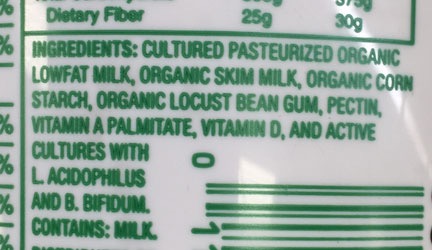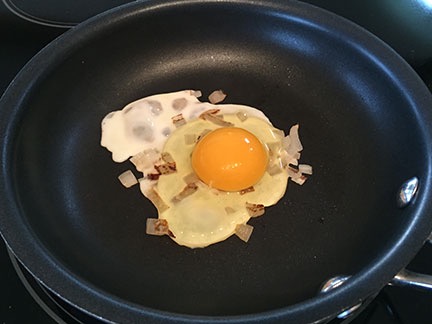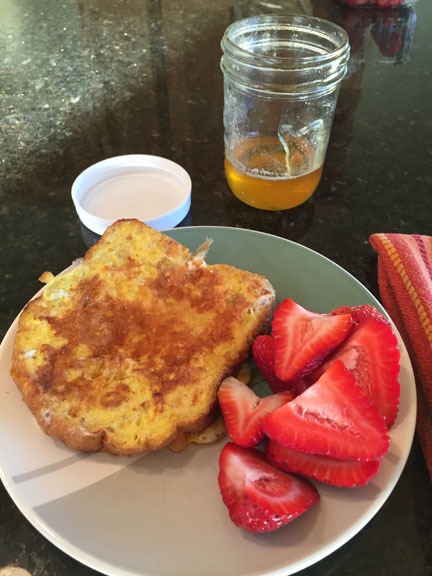Read the ingredients.

This is my favorite yogurt these days. Just wish it wasn’t so damn expensive since I eat so much of it.
I was looking for yogurt in the supermarket the other day. I’ve been drinking a lot of smoothies lately and I wanted an inexpensive alternative to the Chobani greek yogurt I usually buy. Although I usually make my yogurt, I’ve been so busy with work around my home and cherry season chores that I figured I’d make things easy on myself and just buy a quart or two. I figured that if I could find an inexpensive brand, it wouldn’t be worth the trouble of making it myself anymore. At $5+/quart, the Chobani gets costly quickly when you go through a few quarts a week.
So I was in the dairy section of the supermarket, checking out brands I’d never really looked at before. I didn’t need Greek yogurt for my smoothies, but I did need it to be plain, fat-free yogurt — and nothing else.
Yogurt, in case you’re wondering, is milk with active yogurt cultures added. It involves heating the milk, cooling the milk partway, adding the cultures, and holding the temperature until curds form. One more step — draining off a good portion of the liquid whey — is what turns regular yogurt into thick Greek yogurt.
I looked at labels and was absolutely shocked by the additives I found in some. While it’s common for Greek yogurt makers to fake Greek yogurt by adding thickeners, I didn’t expect yogurt makers to add unnecessary ingredients to regular yogurt. Yet there they were in the ingredients list. Pectin was especially popular — nearly every yogurt contained it.

Good thing that locust bean gum is organic.
The ingredient list in one organic yogurt was so offensive that I took a picture of it.
Remember, yogurt = milk + active yogurt cultures. It doesn’t need pectin, corn starch, locust bean gum, or added vitamins.
You have to understand that many of my friends are organic food snobs. In their minds, if it’s not organic, it’s not healthy. These are the people who buy organic produce, sometimes paying three to ten times the price of non-organic produce. They think organic means no chemicals. (Certain chemicals are allowed in organic food production.) They think organic means healthier. (No scientifically conducted test has shown a difference in nutritional value between organic and non-organic food.) They think that the industrial farming methods that make it possible to feed millions of people cost effectively are unsafe or even evil. When faced with a choice between an organic yogurt and the Chobani I usually buy, they’d pick the organic, likely without even reading the label beyond the word “organic.” That word, which the manufacturer has paid a premium to the FDA to use, is shorthand, in their minds, for “healthy.”

It might not be certified “organic,” but at least it’s yogurt — and only yogurt.
I looked at every label for every non-fat and low-fat plain yogurt in the supermarket. In the end, I bought the Chobani. It was the only one that didn’t include additives that aren’t a part of real yogurt. I also bought a half gallon of skim milk and will be making two quarts of yogurt today, using the Chobani as a starter, for next week.
Those of you who are blindly buying products because the label proclaims they’re organic might be putting all kinds of weird ingredients into your bodies. You can keep them. I’ll stick with a product that contains exactly what it should — and only that.


 Small amount of oil or cooking spray. I usually use olive oil spray to keep the fat down a bit.
Small amount of oil or cooking spray. I usually use olive oil spray to keep the fat down a bit. Gather the onions or scallions into the middle of the pan and drop an egg on them. You might want to use this opportunity to break the yolk so it cooks. I don’t scramble my eggs before cooking, but you could if you want to. Just make sure the egg stays together in the middle of the pan so it doesn’t get larger than the tortilla.
Gather the onions or scallions into the middle of the pan and drop an egg on them. You might want to use this opportunity to break the yolk so it cooks. I don’t scramble my eggs before cooking, but you could if you want to. Just make sure the egg stays together in the middle of the pan so it doesn’t get larger than the tortilla.
